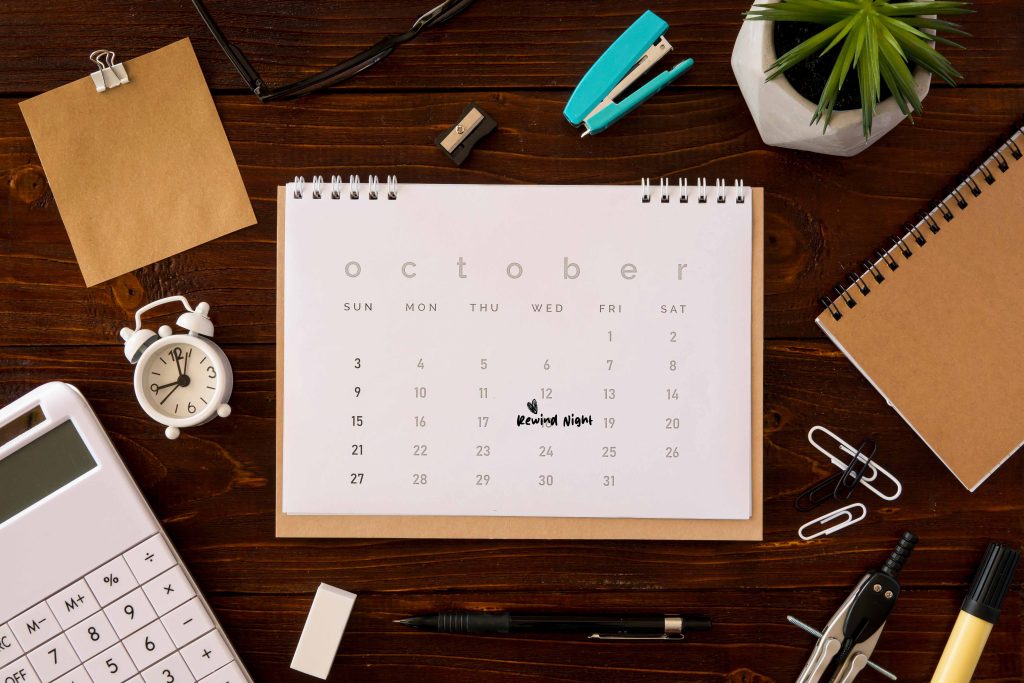The Five-Minute Rewind: A Micro-Practice for Hard Days

When the future feels impossible, five minutes can still be generous. The Five-Minute Rewind is a tiny pattern-breaker you can use after an argument, a bill shock, or a discouraging day. You’ll grab one image from your shared past, name one feeling it gives you now, and take one action that expresses that feeling today. It’s not denial; it’s direction—turning memory into movement.
Why the Five-Minute Rewind Works
 When tension rises in marriage, logic often leaves the room first. The brain shifts from calm reasoning into fight, flight, or freeze. You replay what went wrong instead of what’s right, and emotional distance grows inch by inch.
When tension rises in marriage, logic often leaves the room first. The brain shifts from calm reasoning into fight, flight, or freeze. You replay what went wrong instead of what’s right, and emotional distance grows inch by inch.
The Five-Minute Rewind works because it gently reverses that process. It doesn’t demand a long talk, an apology, or even agreement—it simply reminds your nervous system that connection is still possible.
This tiny practice is built on a few scientific truths:
- Memory triggers emotion faster than reasoning. A photo of shared joy can interrupt anger far more effectively than a lecture about it.
- Emotion directs action. When you feel appreciation, tenderness, or humor, your body follows with open posture, softer tone, and slower speech.
- Action reinforces emotion. The smallest gesture—hand on shoulder, quick text, shared smile—can restore the safety your brain craves.
In essence, this five-minute practice takes you out of reaction mode and places you back into relationship mode.
Step One: Find the Image That Reminds You Who You Are
 Start by picking one image from your shared past. It doesn’t need to be perfect—no filters, no big occasions. The more ordinary, the better. Look for a moment where you felt safe, silly, or simply together.
Start by picking one image from your shared past. It doesn’t need to be perfect—no filters, no big occasions. The more ordinary, the better. Look for a moment where you felt safe, silly, or simply together.
Maybe it’s the picture of you both eating cheap tacos in the car, or a selfie from a walk when you couldn’t stop laughing. The goal isn’t nostalgia—it’s to locate a time when being “us” felt easy.
If you’ve built a Memory Bank (a simple album of proof from good days), this step takes seconds. If not, start by scrolling your photos until something in your chest loosens. That’s your sign.
Pro tip: Keep a small folder titled “Us—Evidence.” Add 30 photos that remind you who you really are together. When tension strikes, it’s already waiting.
Step Two: Name the Feeling the Photo Gives You Now
 Pause on the photo. Breathe. What emotion rises first?
Pause on the photo. Breathe. What emotion rises first?
It might be warmth, gratitude, humor, curiosity, or peace. Sometimes it’s bittersweet—“I miss that version of us.” That’s okay. The feeling doesn’t have to be pure joy; it just needs to be true.
Now, name it aloud or write it down. “This photo makes me feel calm.” “This makes me proud of us.” “This reminds me that we’ve been through worse.”
Naming the emotion engages your prefrontal cortex—the part of your brain that helps regulate reactions. It’s like dimming the emotional volume without muting the song.
If you’ve been following the rhythm from When You Can’t See a Way Forward: How Looking Back Rebuilds Hope, this step will feel familiar. You’re anchoring your emotions not to the problem, but to the proof.
Step Three: Translate That Feeling into One Small Action
 This is where memory becomes movement.
This is where memory becomes movement.
Ask yourself: What’s one thing I can do right now that expresses the feeling this photo gives me?
If the photo makes you feel peaceful, maybe your action is sitting quietly together for a minute.
If it sparks laughter, send a text that says, “Still can’t believe we survived that road trip.”
If it makes you feel proud, whisper, “I still choose us,” before you both sleep.
It doesn’t have to be profound. It just has to be done.
This is the heart of the Five-Minute Rewind—a micro-action that reconnects emotional truth with present reality. Small, repeated actions accumulate, teaching your brain: “We may argue, but we’re still a team.”
For couples who’ve tried longer talks without progress, this practice can restore safety first—making deeper communication possible later.
When to Use the Five-Minute Rewind
 This practice is especially powerful right after emotional friction—when it feels too soon to “talk it out,” but too painful to stay distant.
This practice is especially powerful right after emotional friction—when it feels too soon to “talk it out,” but too painful to stay distant.
Use it when:
- You’ve had an argument and need to calm before repairing.
- You’re overwhelmed by stress (bills, parenting, work).
- One of you shuts down emotionally.
- You’re tempted to withdraw instead of reach out.
In moments like these, trying to “fix it” right away can backfire. The Five-Minute Rewind gives both partners a safe middle step—something gentle enough to bypass defensiveness but real enough to create change.
It’s not a replacement for conversation. It’s the bridge that makes conversation possible.
If you find yourself needing more consistent rhythm, blend this with your Marriage Rhythms Handbook to anchor connection before tension even starts.
The Science Behind the Five-Minute Rewind
 Here’s what’s happening beneath the surface:
Here’s what’s happening beneath the surface:
- Recollection replaces rumination. When you deliberately remember connection, your brain shifts from analyzing pain to reliving peace.
- Positive affect broadens thinking. Warm memories expand mental flexibility—you can problem-solve better and empathize more.
- Micro-actions lower cortisol. A single affectionate gesture reduces stress hormones in both partners.
- Shared meaning increases resilience. Revisiting your story together reinforces your identity as a team instead of adversaries.
The Five-Minute Rewind works because it bypasses the “who’s right” conversation and returns you to “we’re on the same side.” Once your body feels safe, words follow naturally.
Common Misconceptions About the Five-Minute Rewind
 “We don’t have time.”
“We don’t have time.”
You do. It takes less time than scrolling social media or finishing a text argument. It’s five minutes that prevent hours of distance.
“It’s too cheesy.”
Only if you force it. The Five-Minute Rewind isn’t about acting romantic—it’s about remembering reality. If you laughed hard once, you can laugh again.
“Our past wasn’t perfect.”
It doesn’t have to be. Even couples with complicated histories can find moments worth remembering—tiny proofs of kindness, resilience, or shared humor.
If your early story includes hardship, use the From Friends to Forever: Using Your Origin Story to Stabilize Today framework to reinterpret your beginnings through growth, not guilt.
A Script to Guide Your Five-Minute Rewind
 Here’s a gentle way to walk through the practice without awkwardness.
Here’s a gentle way to walk through the practice without awkwardness.
Step 1: The Setup
“Can we do a Five-Minute Rewind? It’s just a short thing that helps me feel close again.”
Step 2: The Image
“Let’s pick one photo from our favorites. This one—remember that trip?”
Step 3: The Feeling
“This picture makes me feel steady. Like we’re good even when life’s messy.”
Step 4: The Action
“So, how about we make tea and sit here for a bit before bed?”
That’s it. No fixing, no postmortem, no pressure. You’ve just taken a hard moment and turned it into evidence of connection.
Make It a Habit: Integrating the Five-Minute Rewind Into Your Week
You don’t have to wait for a fight to use this practice. It works beautifully as a maintenance ritual. Try these ideas:
- Evening Reset: End one day a week by choosing a photo, naming a feeling, and acting it out—hug, laugh, or pray.
- After Conflict: Use it as a bridge before serious discussion.
- Date-Night Opener: Start date night by scrolling your Memory Bank together.
- Monthly Review: Combine with your highlight reel to remind yourselves how far you’ve come.
If you love designing small repeatable rhythms, the Design Your Marriage Rhythms cornerstone expands this into a full toolkit of rituals that keep love consistent.
When the Five-Minute Rewind Feels Hard
 There will be times when you don’t want to do it—when hurt runs deep or silence feels easier. That’s normal. The goal isn’t perfection; it’s presence.
There will be times when you don’t want to do it—when hurt runs deep or silence feels easier. That’s normal. The goal isn’t perfection; it’s presence.
If you can’t find a photo, start smaller. Recall a sound, scent, or phrase from a better time. “Remember that song?” or “The way you laughed at dinner that night.” Tiny sensory details work like keys—they unlock memory’s door.
And if conflict patterns run deep, combine this micro-practice with structured repair steps from When You Can’t See a Way Forward: How Looking Back Rebuilds Hope to reconnect steadily rather than suddenly.
A 30-Day Challenge: Building the Five-Minute Habit
If you want to see measurable change, commit to one Five-Minute Rewind per day for 30 days.
Day 1–10: Focus on warm memories—funny, light, safe.
Day 11–20: Choose challenge memories—times you overcame something together.
Day 21–30: Mix it up. Alternate joy and resilience photos.
Notice what shifts. Your tone, patience, and teamwork will slowly recalibrate. By week four, your brain starts to associate “stress” with “pause and reconnect” instead of “argue or withdraw.”
That’s the quiet power of micro-practices—they train your automatic reactions toward safety.
For a companion framework on tracking your small wins, read Build Momentum in Marriage: Small Metrics That Keep Love Moving. It shows how to measure connection without turning love into homework.
The Faith Layer: Remembering God’s Hand in Your Story
For faith-based couples, the Five-Minute Rewind can become a spiritual reset. Each photo isn’t just a memory—it’s a reminder of grace.
Try this version:
- Look at the photo together.
- Thank God for the moment it captures.
- Ask, “What quality did He grow in us then that we need now?”
This transforms your memory into worship. You’re not just recalling your strength—you’re acknowledging the One who carried you.
For deeper faith integration, explore Faithful Remembering: Spiritual Practices to Recall God’s Goodness in Marriage.
The Payoff: From Reaction to Reconnection
 Five minutes might sound too small to matter—but emotional healing starts small. Each time you do this practice, you rewire the connection between memory and action.
Five minutes might sound too small to matter—but emotional healing starts small. Each time you do this practice, you rewire the connection between memory and action.
Instead of letting your last argument define the atmosphere, you let your best memories define your next move.
Instead of waiting for perfect timing, you create safety in real time.
Instead of “someday we’ll feel close again,” you whisper, “We already are.”
The Five-Minute Rewind is how ordinary couples practice extraordinary resilience—one moment of remembering at a time.
So next time the future feels foggy, take a breath, pull up one photo, name one feeling, and do one small thing that says, We’re still us.





